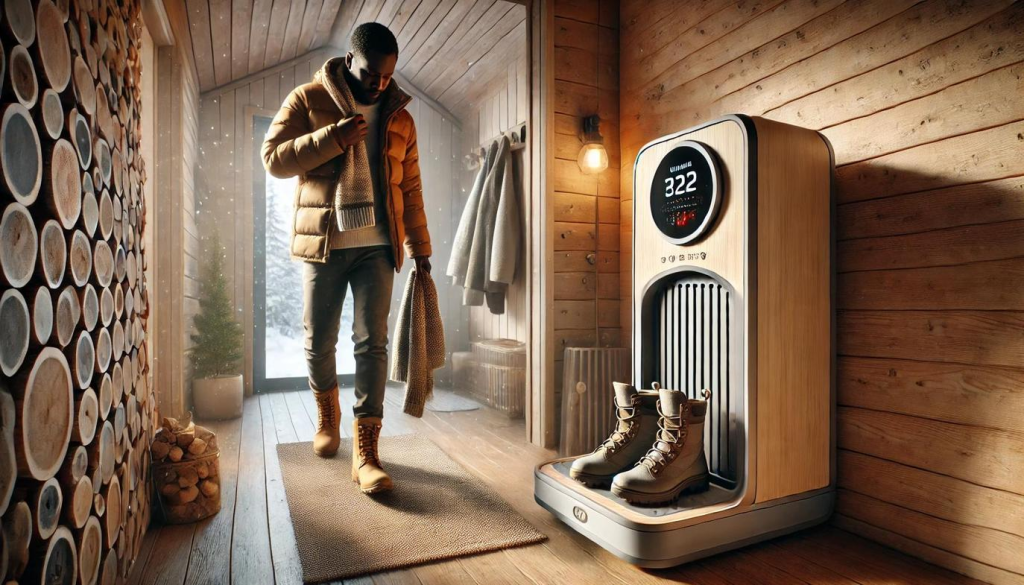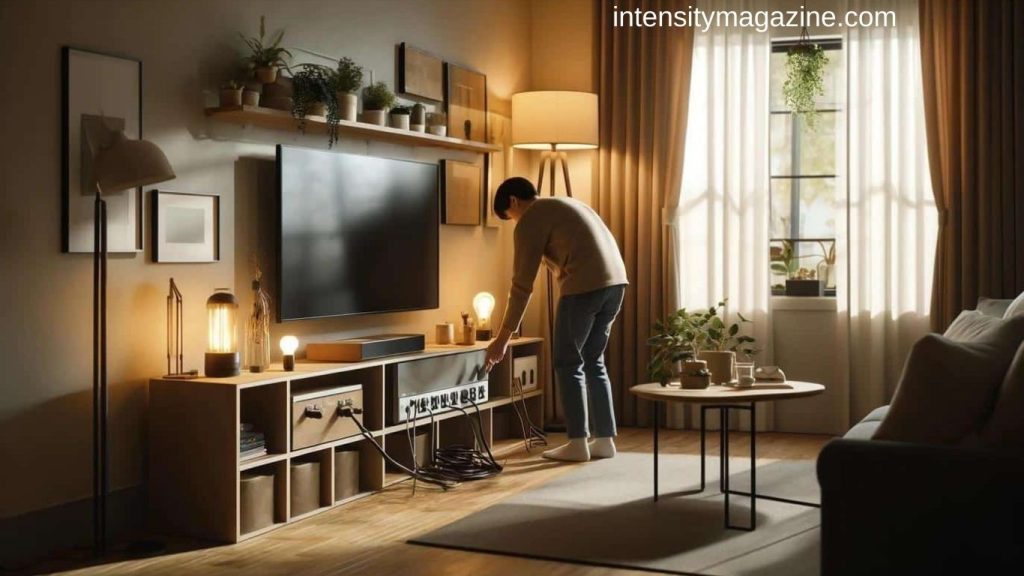Creating a home that feels warm, welcoming, and eco-friendly doesn’t have to be overwhelming or expensive. With a few simple lifestyle swaps, you can lower energy costs, reduce waste, and enjoy a space that radiates comfort. The beauty of sustainable living is that it’s not about sacrificing luxury—it’s about making smarter choices that create long-term value for you and the planet.
When you shift your mindset toward sustainability, small changes quickly add up to lasting comfort. Soon, you’ll notice patterns: wasteful habits you can replace, unused items you can repurpose, and areas of your home that can serve you better. This mindful awareness is where transformation begins—not with a dramatic overhaul, but with intentional steps taken right where you are.
Start Small with Energy-Saving Habits
Energy efficiency is one of the easiest and most impactful ways to build a sustainable home. By adopting conscious energy-saving habits, you lower your carbon footprint while creating a living space that feels more connected to nature.
Simple swaps make a big difference:
- Replace outdated incandescent bulbs with long-lasting LED lights that use far less electricity.
- Unplug idle electronics and avoid energy “vampires” that drain power even when turned off.
- Maximize natural daylight by opening blinds, positioning furniture near windows, and working in well-lit areas.
These mindful practices reduce unnecessary energy use and create systems of efficiency that pay off over time. Each small step builds stability, forming a foundation for a home that is both eco-conscious and cost-effective.
Reduce Waste with Reusable Alternatives

Waste reduction is another cornerstone of a sustainable home. Disposable items may seem convenient, but they’re costly in the long run and add to overflowing landfills. By embracing reusable alternatives, you not only save money but also create a cleaner, more intentional household.
Practical swaps include:
- Using cloth towels instead of paper ones.
- Storing food in refillable glass jars instead of single-use plastic containers.
- Choosing durable water bottles and coffee cups rather than disposable ones.
These small lifestyle shifts ripple outward, conserving resources while giving your home a modern, clutter-free look. Over time, these decisions build momentum, proving that sustainability can be stylish, practical, and deeply rewarding.
The Smart Case for Boot Dryers
Comfort and sustainability don’t need to be at odds. In fact, one of the smartest home upgrades for cold or wet climates is surprisingly simple: a boot dryer.
Why does this matter? Wet footwear doesn’t just feel uncomfortable—it also shortens the lifespan of your shoes. Piling damp boots in a corner or blasting them with high-energy dryers wastes resources and often damages materials. Boot dryers, on the other hand, gently remove moisture while using minimal electricity.
This small appliance extends the life of your shoes, prevents mold and odor, and keeps your home feeling fresh. For anyone serious about sustainability, protecting your belongings so they last longer is just as important as reducing waste. It’s a quiet yet powerful way to combine comfort with care.
Choose Sustainable Style

Your home’s design choices also play a critical role in shaping both comfort and sustainability. Opting for durable, timeless materials ensures your investment lasts while reducing the environmental costs of constant replacement.
Smart style choices include:
- Furniture made from reclaimed or natural wood.
- Recycled textiles and fabrics that add texture and warmth.
- Vintage or secondhand pieces that bring unique charm while minimizing waste.
Intentional design is more than aesthetics—it’s about creating a living environment that supports well-being while reducing your footprint. Every decision, from the materials you select to the way you arrange a room, influences both the atmosphere and the impact your space leaves behind.
Add Nature Indoors
Nothing brings a home to life quite like plants. They improve air quality, reduce stress, and bring an undeniable sense of peace to your environment. The best part? You don’t need to be an expert gardener to enjoy their benefits.
Choose hardy, low-maintenance varieties like snake plants, pothos, or peace lilies. These resilient plants thrive indoors, even with minimal care, making them perfect for busy households. Beyond their health benefits, plants add vibrancy and beauty, transforming even small corners into refreshing sanctuaries.
By introducing greenery, you’re not only decorating—you’re creating a healthier, more balanced ecosystem inside your home.
Live by Your Values
At its core, a sustainable home is a reflection of values. It’s built through consistent daily choices, whether that’s reusing materials, conserving energy, or simply being mindful of waste. Sustainability isn’t about perfection; it’s about awareness, intention, and progress.
The next time you walk through your door, take a moment to reflect: What could be reused? What could be swapped? What could be simplified? Each decision, however small, adds to a home that is both comfortable and aligned with your values.
Lasting Impact with Everyday Choices

Building a sustainable home isn’t a one-time project—it’s an evolving journey. Every swap, whether it’s choosing eco-friendly lighting, adding plants, or investing in quality furniture, makes a difference. These mindful actions ripple outward, shaping not only your home but also your contribution to a healthier planet.
With each step, your home becomes more than just a place to live—it becomes an extension of your values. It’s efficient, beautiful, and filled with purpose. And that’s the real reward: knowing that every thoughtful decision enhances your comfort today while preserving the world for tomorrow.
Frequently Asked Questions:
How can I make my home eco-friendly without spending a lot of money?
Start with small, budget-friendly changes like switching to LED bulbs, using reusable containers, and adding low-maintenance plants. These affordable swaps create long-term savings and reduce your environmental impact.
What are the easiest energy-saving habits to adopt at home?
Simple practices like unplugging unused electronics, maximizing natural light, and replacing old bulbs with energy-efficient LEDs can significantly lower your energy use.
Why should I switch from disposable to reusable household items?
Reusable items cut down on waste, save money, and create a cleaner, more organized home. They also reduce landfill contributions and promote sustainable living.
Are sustainable home design choices stylish as well as practical?
Yes. Furniture made from natural wood, recycled fabrics, or vintage pieces adds character and longevity, blending beauty with sustainability.
How do plants contribute to a sustainable and comfortable home?
Indoor plants improve air quality, reduce stress, and add a calming aesthetic. Hardy species thrive with minimal care, making them perfect for busy lifestyles.
What role does a boot dryer play in a sustainable lifestyle?
A boot dryer extends the life of your footwear, prevents mold and odor, and uses little energy, making it both eco-friendly and practical.
Is sustainable living about making big changes quickly?
Not at all. Sustainability is about small, consistent choices that gradually transform your home into a space of comfort and care.
Conclusion
Transforming your home into a sustainable and comfortable space doesn’t require massive renovations or costly investments—it begins with small, intentional choices. From saving energy with LED lighting to reusing household items, adding plants, and making smart design decisions, every step contributes to a healthier, more mindful way of living. Even simple tools like boot dryers can extend the life of your belongings while reducing waste.



